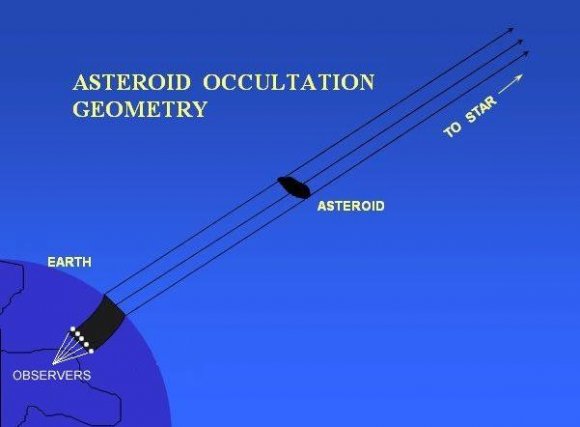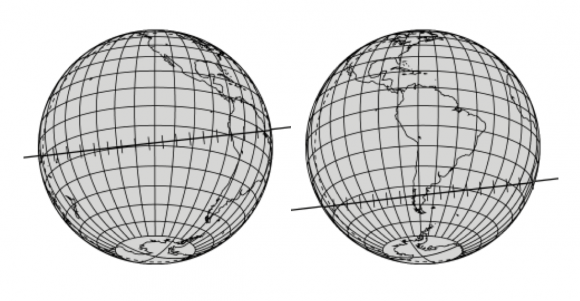While the New Horizons spacecraft was heading to Pluto, scientists from the mission used Hubble and other telescopes to try and find out more about the environment their spacecraft would be flying through. No one wanted New Horizons to run into unexpected dust or debris.
And now, as New Horizons prepares to fly past its next target, the Kuiper Belt Object known as 2014 MU69, mission scientists are using every tool at their disposal to examine this object and the surrounding region.
They've already uncovered some surprises.
On June 3, 2017, 2014 MU69 passed in front of a star – in an event called an occultation – providing a two-second glimpse of the object's shadow.

A diagram of an occultation event, via the International Occultation Timing Association.
More than 50 mission team members and collaborators traveled to South Africa and Argentina to catch the occultation, setting up telescopes to capture the event. They are now looking through more than 100,000 images of the occultation star that can be used to assess the environment around this Kuiper Belt object (KBO). In addition, the Hubble Space Telescope and Gaia, a space observatory of the European Space Agency (ESA) also observed the event.
The team said that while MU69 itself eluded direct detection, the June 3 data provided valuable and unexpected insights that have already helped New Horizons.
"These results are telling us something really interesting," said New Horizons Principal Investigator Alan Stern, of the Southwest Research Institute. "The fact that we accomplished the occultation observations from every planned observing site but didn't detect the object itself likely means that either MU69 is highly reflective and smaller than some expected, or it may be a binary or even a swarm of smaller bodies left from the time when the planets in our solar system formed."
Mission scientist Simon Porter said on Twitter, "The upshot is that MU69 is probably not as big and dark as it could have been, and (more importantly) doesn't seem to have rings or a dust cloud," adding later that the "lack of dust was reassuring."
Again, no one wants to New Horizons to run into any surprising dust or debris.
The team will be observing two more occultation events on July 10 and July 17, and Porter said they should get even better constraints from these next two events.

Projected path of the 2014 MU69 occultation shadow, on July 10 (left) and July 17, 2017. Credit: Larry Wasserman/Lowell Observatory, via NASA.
On July 10, NASA's airborne Stratospheric Observatory for Infrared Astronomy (SOFIA) will use its 100-inch (2.5-meter) telescope to probe the space around MU69 for debris that might present a hazard to New Horizons as it flies by in 18 months.
On July 17, the Hubble Space Telescope also will check for debris around MU69, while team members set up another ground-based "fence line" of small mobile telescopes along the predicted ground track of the occultation shadow in southern Argentina to try to better constrain, or even determine, the size of MU69.
Initial estimates of MU69's diameter, based primarily on data taken by the Hubble Space Telescope since the KBO's discovery in 2014, fall in the 12-25-mile (20-40-kilometer) range. However, the latest data from the June occultation seem to imply it's at or even below the smallest estimated sizes.
"2014 MU69 is a great choice because it is just the kind of ancient KBO, formed where it orbits now, that the Decadal Survey desired us to fly by," Stern said back in August 2015 when the target was announced. "Moreover, this KBO costs less fuel to reach [than other candidate targets], leaving more fuel for the flyby, for ancillary science, and greater fuel reserves to protect against the unforeseen."
You can see the star brightness, predicted shadow path and other tech specs for the July 10 and July 17 occultation events at the embedded links.
Source: New Horizons
No comments:
Post a Comment